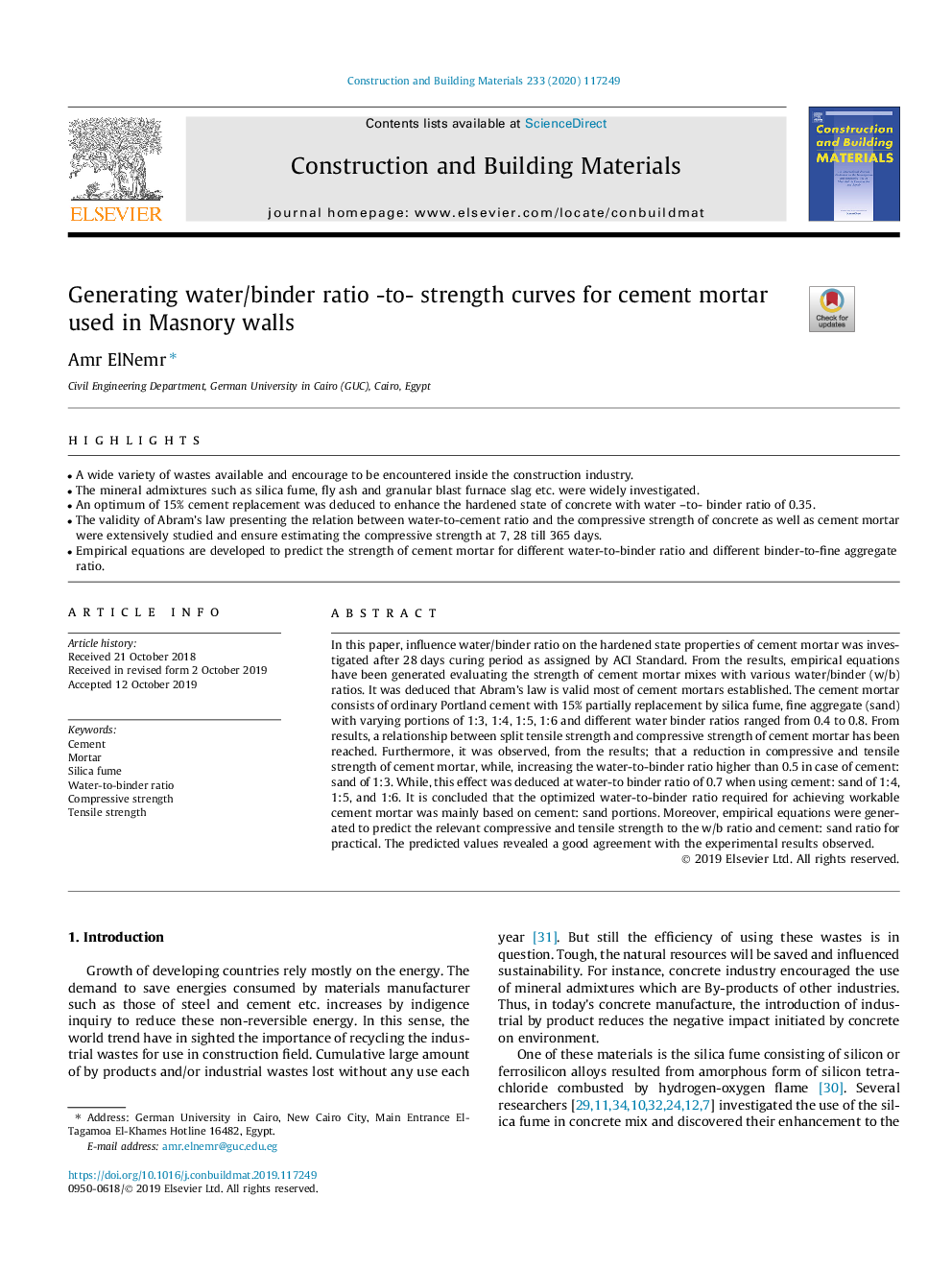| Article ID | Journal | Published Year | Pages | File Type |
|---|---|---|---|---|
| 13419791 | Construction and Building Materials | 2020 | 10 Pages |
Abstract
In this paper, influence water/binder ratio on the hardened state properties of cement mortar was investigated after 28â¯days curing period as assigned by ACI Standard. From the results, empirical equations have been generated evaluating the strength of cement mortar mixes with various water/binder (w/b) ratios. It was deduced that Abram's law is valid most of cement mortars established. The cement mortar consists of ordinary Portland cement with 15% partially replacement by silica fume, fine aggregate (sand) with varying portions of 1:3, 1:4, 1:5, 1:6 and different water binder ratios ranged from 0.4 to 0.8. From results, a relationship between split tensile strength and compressive strength of cement mortar has been reached. Furthermore, it was observed, from the results; that a reduction in compressive and tensile strength of cement mortar, while, increasing the water-to-binder ratio higher than 0.5 in case of cement: sand of 1:3. While, this effect was deduced at water-to binder ratio of 0.7 when using cement: sand of 1:4, 1:5, and 1:6. It is concluded that the optimized water-to-binder ratio required for achieving workable cement mortar was mainly based on cement: sand portions. Moreover, empirical equations were generated to predict the relevant compressive and tensile strength to the w/b ratio and cement: sand ratio for practical. The predicted values revealed a good agreement with the experimental results observed.
Related Topics
Physical Sciences and Engineering
Engineering
Civil and Structural Engineering
Authors
Amr ElNemr,
